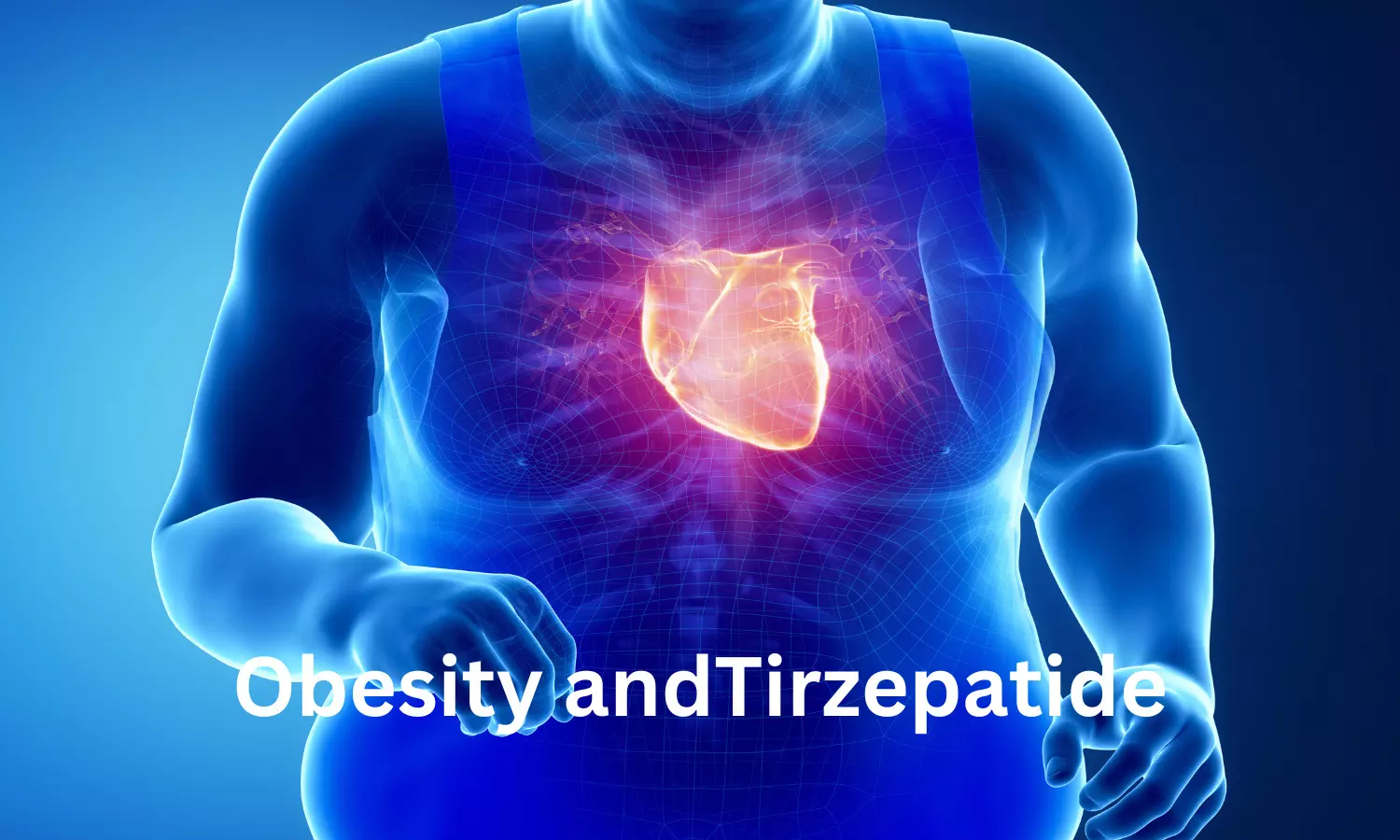Tirzepatide’s Effectiveness in HFpEF linked to Baseline BMI and Fat Distribution: SUMMIT Trial

A post hoc analysis of the SUMMIT trial, published in JACC, reveals that baseline body mass index (BMI) and fat distribution significantly affect the response to tirzepatide in patients with heart failure with preserved ejection fraction (HFpEF) and obesity. Patients who lost 15% or more of their body weight experienced greater improvements in exercise capacity, blood pressure, and weight. These findings highlight the importance of baseline BMI in predicting clinical outcomes with tirzepatide therapy. The study was conducted by Barry A. and colleagues.
Obesity is a well-documented cause of HFpEF, an entity of heart failure in which cardiac pumping function is maintained but relaxation and filling are impaired. Conventional treatment has been in this subset of patients. Tirzepatide, a weekly injectable medication, engages both the glucose-dependent insulinotropic polypeptide (GIP) and glucagon-like peptide-1 (GLP-1) receptors and is effective in weight reduction and metabolic regulation. The SUMMIT trial tested its impact in 731 obese (BMI ≥30 kg/m²) and HFpEF patients categorized under NYHA class II-IV. The patients were randomized to tirzepatide (n=364) or placebo (n=367) for 52 weeks.
This secondary analysis examined whether baseline severity of obesity (BMI) or distribution of obesity (WHR) had an effect on endpoints like cardiovascular death or HF deterioration, quality of life (KCCQ-CSS), 6-minute walk distance (6MWD), C-reactive protein (CRP), and body weight (BW). Cox regression and mixed-effects models were employed. Investigators also assessed the relationship between the magnitude of weight reduction and waist circumference decrease with tirzepatide and improvements in the major endpoints.
Key Findings:
• Younger, female patients with higher BMI had more volume overload, inflammation, and physical restriction. In BMI tertiles, tirzepatide always decreases cardiovascular death or worsening of HF risk with no heterogeneity by BMI or WHR stratum.
More increase in 6-minute walk distance:
• Estimated treatment difference (ETD): 9.9 m (low BMI) vs 26.3 m (middle BMI) vs 37.5 m (high BMI); P = 0.025
Greater weight loss:
• ETD: −10.7% vs −11.8% vs −14.4%; P = 0.006
Greater decrease in systolic BP:
• ETD: −1.00 vs −6.65 vs −6.62 mm Hg; P = 0.035
Trend towards improved quality of life (KCCQ-CSS):
• P = 0.097
In HFpEF patients with obesity, tirzepatide decreased the risk of heart failure events and cardiovascular death independent of baseline BMI or WHR. Increased BMI and WHR were linked to younger age, female gender, increased inflammatory burden, renal dysfunction, and poorer exercise capacity. These results validate the utilization of tirzepatide as an efficacious therapeutic agent for enhancing HFpEF outcomes in obese patients.
Reference:
Borlaug, B. A., Zile, M. R., Kramer, C. M., Ye, W., Ou, Y., Hurt, K., Murakami, M., Packer, M., & SUMMIT Trial Study Group. (2025). Impact of body mass index, central adiposity, and weight loss on the benefits of tirzepatide in HFpEF: The SUMMIT trial. Journal of the American College of Cardiology, 86(4), 242–255. https://doi.org/10.1016/j.jacc.2025.04.059



